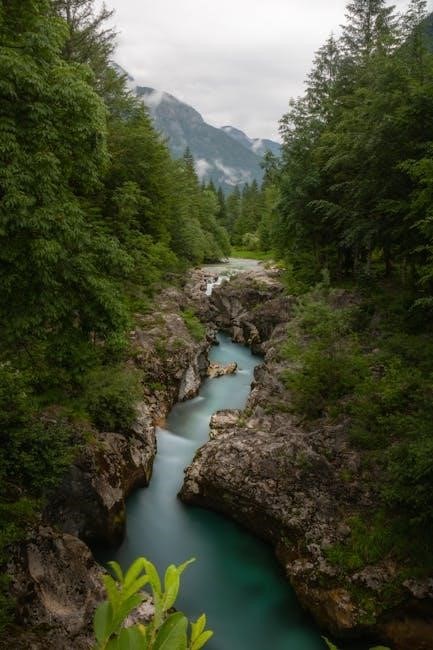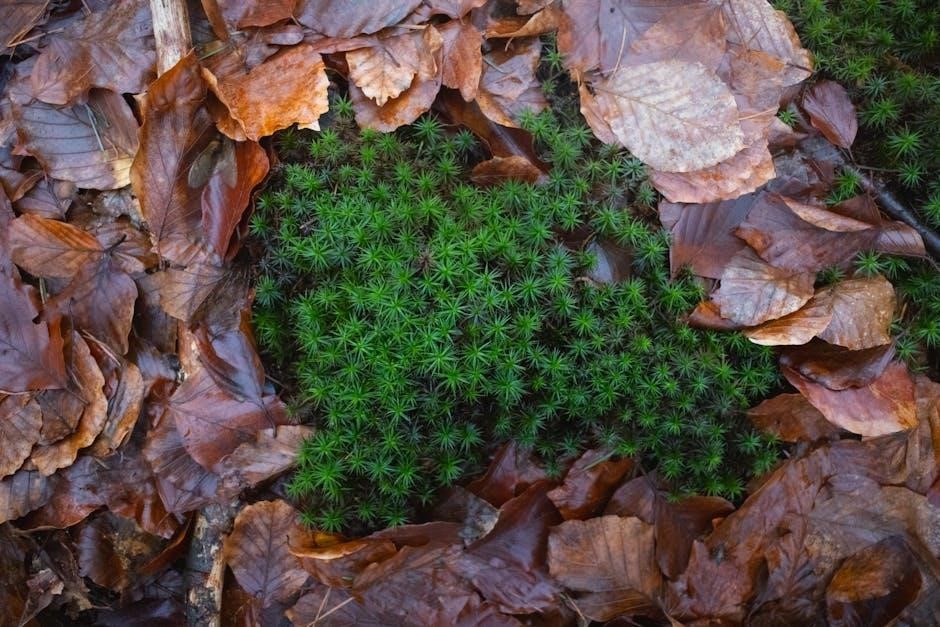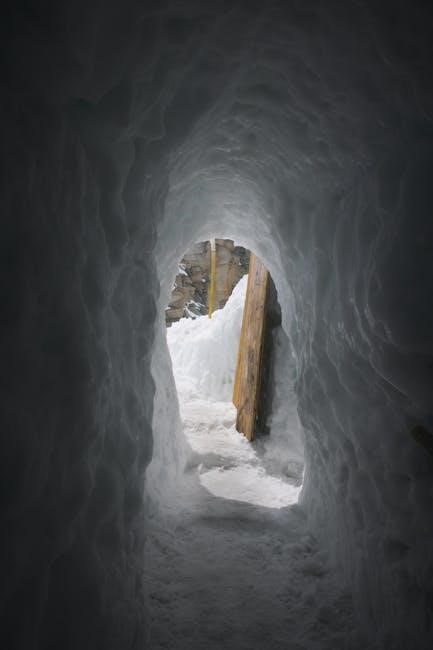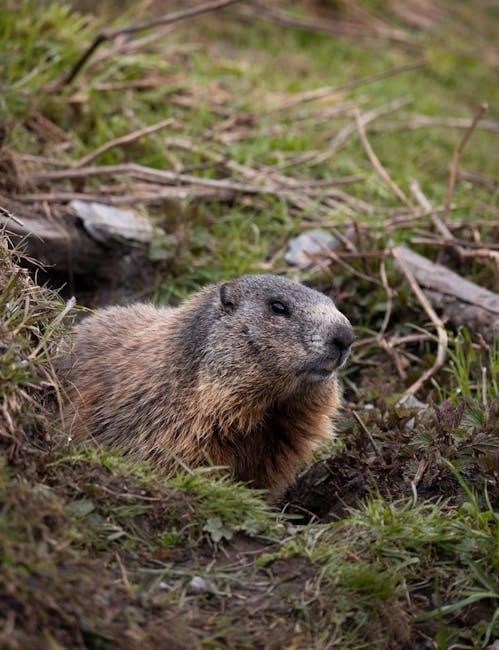Learn about ecological succession with online resources and worksheets, including a pdf guide to understanding the process of ecological succession and its importance in environmental science classrooms today naturally.
What is Ecological Succession
Ecological succession is the process by which one community replaces another as environmental conditions change, this can be seen in the ecological succession worksheet answers pdf that provides a comprehensive overview of the topic. The process involves a series of changes in the species composition of a biological community over time, and it is an important concept in environmental science. Ecological succession can occur in various environments, including forests, grasslands, and wetlands, and it is influenced by factors such as climate, soil, and disturbance. Understanding ecological succession is crucial for managing ecosystems and conserving biodiversity, and it is a key concept in ecology and conservation biology. The ecological succession worksheet answers pdf provides a detailed explanation of the process, including the different types of succession and the factors that influence it, and it is a valuable resource for students and researchers.
Types of Ecological Succession
There are two main types of ecological succession, primary and secondary, which are discussed in the ecological succession worksheet answers pdf. Primary succession occurs in areas where no soil or vegetation existed before, such as after a volcanic eruption or glacier retreat. Secondary succession occurs in areas where soil and vegetation were previously present, but were disturbed or damaged, such as after a forest fire or hurricane. The ecological succession worksheet answers pdf provides a detailed explanation of the differences between primary and secondary succession, including the types of species that colonize the area and the rate of succession. Understanding the different types of ecological succession is important for managing ecosystems and conserving biodiversity, and the ecological succession worksheet answers pdf is a valuable resource for students and researchers studying this topic. The types of succession are influenced by various factors, including climate and soil.

Primary Succession
Primary succession occurs on bare rock or new land, with pdf guides explaining the process naturally and easily.
Definition of Primary Succession
Primary succession is a process that occurs in areas where no soil or vegetation existed before, such as after a volcanic eruption or the retreat of a glacier. This type of succession is characterized by the colonization of new land or bare rock by pioneer species, which are typically hardy and adaptable organisms. The definition of primary succession is closely tied to the concept of ecological succession, which refers to the process of change in the species composition of a biological community over time. According to online resources, including pdf guides, primary succession involves a series of stages, from the initial colonization of the area to the eventual establishment of a mature ecosystem. Understanding primary succession is important for environmental scientists and ecologists, as it can provide insights into the dynamics of ecosystem development and the impacts of environmental change. Primary succession can be studied using ecological succession worksheets and other educational tools.
Process of Primary Succession
The process of primary succession involves several stages, including the initial colonization of the area, the growth of pioneer species, and the eventual establishment of a mature ecosystem. According to ecological succession worksheets and pdf guides, the first stage of primary succession is the colonization of the area by pioneer species, such as lichens and mosses. These organisms are able to tolerate the harsh conditions of the newly formed land and begin to break down the rock and soil. As the soil develops, other species, such as grasses and shrubs, begin to colonize the area, leading to the establishment of a more complex ecosystem. The process of primary succession can take hundreds or thousands of years to complete, depending on the environmental conditions and the species involved. Understanding the process of primary succession is important for environmental scientists and ecologists, and can be studied using online resources and educational tools.

Secondary Succession
Secondary succession occurs in areas with existing soil, using online resources and ecological succession worksheets to understand this process naturally.
Definition of Secondary Succession
Secondary succession is defined as the process of ecological succession that occurs in areas where soil and vegetation have been disturbed or damaged, but not completely destroyed. This type of succession is often seen in areas that have been affected by natural disasters, such as hurricanes or wildfires, or by human activities, such as deforestation or agriculture. The process of secondary succession involves the recolonization of the area by plant and animal species, and the eventual return of a stable ecosystem. Online resources, such as ecological succession worksheets and pdf guides, can provide more information on this topic and help students understand the process of secondary succession. These resources can also include answers to common questions and quizzes to test students’ knowledge. By studying secondary succession, students can gain a better understanding of the complex relationships between living organisms and their environment.
Process of Secondary Succession
The process of secondary succession involves several stages, including the initial colonization of the area by pioneer species, such as grasses and weeds. These species help to stabilize the soil and provide a habitat for other species to colonize. As the ecosystem develops, more complex species, such as shrubs and trees, begin to grow and thrive. The process of secondary succession can be influenced by factors such as climate, soil quality, and the presence of invasive species. Online resources, including ecological succession worksheets and pdf guides, can provide more information on the process of secondary succession and help students understand the complex interactions between species and their environment. By studying the process of secondary succession, students can gain a better understanding of the dynamic nature of ecosystems and the importance of conservation and management. This knowledge can be applied to real-world scenarios.

Ecological Succession Worksheet
Download ecological succession worksheets and pdf answers to help students learn about ecosystem changes and development naturally online today.
Ecological Succession Worksheet Questions

Ecological succession worksheet questions are designed to test students’ understanding of the concept, including the different types of succession and the factors that influence ecosystem development.
The questions may include multiple-choice options, short-answer responses, and essay prompts, all of which can be found in a downloadable pdf format online.
These worksheets provide a comprehensive assessment of students’ knowledge, covering topics such as primary and secondary succession, pioneer species, and climax communities.
By completing these worksheets, students can gain a deeper understanding of ecological succession and its importance in environmental science.
The questions are often accompanied by diagrams, illustrations, and charts to help students visualize the concepts and processes involved in ecological succession.
Teachers can use these worksheets to evaluate student learning and identify areas where additional instruction or review may be needed.
Overall, ecological succession worksheet questions are a valuable tool for teaching and learning about this important concept in environmental science.
Ecological Succession Worksheet Answers
Ecological succession worksheet answers can be found in a downloadable pdf format online, providing students with a comprehensive guide to understanding the concept of ecological succession.
The answer key includes detailed explanations and examples to help students learn from their mistakes and improve their understanding of the topic.
Teachers can also use the answer key to assess student learning and identify areas where additional instruction or review may be needed.
The answers are organized in a clear and concise manner, making it easy for students to follow along and check their work.
By using the ecological succession worksheet answers, students can gain confidence in their ability to understand and apply the concepts of ecological succession.
The answers are also a valuable resource for teachers, providing a convenient and efficient way to grade assignments and provide feedback to students.
Overall, the ecological succession worksheet answers are a valuable tool for teaching and learning about this important concept in environmental science, available online in a convenient pdf format.
Ecological succession is a vital concept, with pdf resources and answers available online to support learning and understanding naturally always.
Importance of Ecological Succession
Ecological succession plays a crucial role in shaping the environment and supporting biodiversity, with online resources such as pdf worksheets and answers providing valuable learning tools. Understanding ecological succession is essential for managing ecosystems and predicting the impact of environmental changes. By studying ecological succession, scientists can gain insights into the complex relationships between species and their environments, and develop strategies for conserving and restoring damaged ecosystems. Additionally, ecological succession is an important concept in environmental science education, helping students understand the dynamic nature of ecosystems and the importance of conservation. With the availability of online resources, including pdf worksheets and answers, students can engage with ecological succession in a more interactive and effective way, developing a deeper understanding of this critical concept. This knowledge can inform decision-making and promote sustainable practices.

